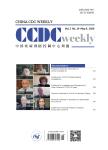Calibrations of Urbanization Level in China
作者机构:State Key Laboratory of Resources and Environmental Information SystemInstitute of Geographic Sciences and Natural Resources ResearchChinese Academy of SciencesBeijingChina University of Chinese Academy of SciencesBeijingChina Center for Regional Agriculture and Rural DevelopmentInstitute of Geographic Sciences and Natural Resources ResearchChinese Academy of SciencesBeijingChina
出 版 物:《China CDC weekly》 (中国疾病预防控制中心周报(英文))
年 卷 期:2022年第4卷第6期
页 面:111-115页
核心收录:
学科分类:12[管理学] 1204[管理学-公共管理]
基 金:Supported by the National Natural Science Foundation of China(Grant No.:42071375)
主 题:Urbanization Figure founding
摘 要:Urbanization is the inevitable outcome of socioeconomic development,especially after the industrial revolution in 1760(1).Since the founding of the People’s Republic of China in 1949,the urbanization of China has made great *** speed and mass of urbanization and notably its relevant consequences,such as resource consumption and carbon emissions,has taken place in the most populous country in the world over the past three decades,which is raising increased concerns internationally(2)(Figure 1).Urbanization rate(in this article,this indicator refers to the population urbanization rate)is a common indicator of *** international organizations(such as the World Bank,World Health Organization,Food and Agriculture Organization of the United Nations,etc.)use urbanization as one of the important criteria for measuring productivity and economic growth in a country(1).China’s urbanization process can be described as the largest population migration in history and has also had an important impact on public *** the national population migrates from rural to urban areas,differences in lifestyle,environmental quality,social security,and accidental injuries have all been brought about and become more and more dramatic(3).



